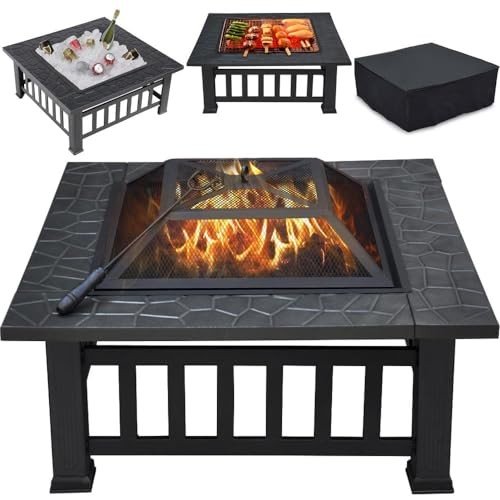5 Laws That Can Help With The Traditional Fireplaces UK Industry
The Timeless Appeal of Traditional Fireplaces in the UK
Traditional fireplaces have actually long been integral to homes throughout the United Kingdom, going beyond mere energy to end up being focal points of warmth, convenience, and aesthetic beauty. This short article digs into the long-lasting appeal of traditional fireplaces, exploring their history, style variations, setup considerations, and their modern-day significance.
Historical Significance of Fireplaces
The fireplace has actually played a central role in British homes given that middle ages times. Initially, they were important for heating and cooking. Over the centuries, with the advent of main heating and technological advancements, fireplaces have actually changed into signs of heritage and style.
Secret Historical Milestones
Date
Milestone
Description
12th Century
Introduction of Chimneys
Allowed indoor fireplaces to be typical, improved ventilation.
16th Century
The Renaissance impact
Fireplaces ended up being more decorative, showing the age's designs.
18th Century
The Georgian Era
Developed elaborate mantels made from wood and stone.
19th Century
Victorian Era
Intro of cast-iron and tiled fireplaces.
20th Century
Decline and Modern Design
Shift towards gas and electric, with some revival of traditional styles.
Kinds Of Traditional Fireplaces
While contemporary designs focus on minimalism, traditional fireplaces often exhibit complex workmanship and historical significance. Here are some popular kinds of traditional fireplaces frequently found in the UK:
Open Hearth Fireplaces
- Defined by a large opening and generally built from brick or stone.
- Provides a cozy atmosphere and the sound of crackling flames.
- Needs a correct flue to redirect smoke outdoors.
Wood-Burning Stoves
- Confined systems that burn wood for heat, typically including a glass door.
- More efficient than open hearths, supplying better heat retention.
- Offered in numerous styles, from rustic to contemporary.
Cast Iron Fireplaces
- Popular in the Victorian age, known for ornate designs.
- Resilient and renowned for exceptional heat conduction.
- Generally feature detailed patterns or motifs, boosting visual appeal.
Tiled Fireplaces
- Typically adorned with decorative tiles, these fireplaces display creative style.
- Typical in the 19th century, tiles can feature scenes or floral designs.
- Normally coupled with wood or cast iron parts.
Marble Fireplaces
- Renowned for their elegance, these fireplaces are generally custom-made.
- Marble offers a luxurious surface and complements numerous interior styles.
- They require mindful setup due to their weight.
Table: Comparison of Traditional Fireplace Types
Fireplace Type
Heat Efficiency
Aesthetic Appeal
Upkeep Needs
Fuel Type
Open Hearth
Low
High
High (chimney cleansing)
Wood
Wood-Burning Stove
High
Moderate
Moderate (wood supply)
Wood
Cast Iron
High
High
Low
Wood/Gas
Tiled
Moderate
Extremely High
Low (if non-usable)
N/A
Marble
Moderate
Really High
Moderate
N/A
Factors to consider for Installing a Traditional Fireplace
Setting up a traditional fireplace can improve a home's character but features specific considerations. Here are some points house owners must keep in mind:
Building Regulations: Always examine regional building regulations and regulations. Setup might need consent, particularly if structural adjustments are needed.
Material Selection: Choose materials that match the home's architecture and individual design. Consider usefulness alongside aesthetic appeal.
Ventilation: Ensure appropriate ventilation through a chimney or flue to prevent smoke and gases from collecting inside.
Security Precautions: Install carbon monoxide gas detectors and ensure all safety steps are in place, particularly if using wood-burning options.
Professional Installation: Engage a certified professional to guarantee safe and efficient setup, abiding by security standards.
Advantages of Traditional Fireplaces
In spite of the increase of modern heating services, traditional fireplaces stay precious for several factors:
Aesthetic Charm
- Includes character to any room.
- Acts as a social focal point, improving gatherings.
Mental Comfort
- Provides warmth not just physically however mentally.
- Creates a cozy environment perfect for relaxation.
Value Addition to Property
- Improves the appeal of a home to prospective purchasers.
- Often increases home worth due to their desirability.
Ecological Considerations
- Wood can be a sustainable resource when sourced sustainably.
- Traditional fireplaces can contribute less to energy expenses compared to electric systems.
Regularly Asked Questions (FAQs)
1. Are traditional fireplaces energy efficient?
While traditional fireplaces may not be as energy-efficient as modern heating unit, enhancements in style, such as the installation of glass doors, can boost their performance. Wood-burning stoves are particularly known for being more effective than open hearths.
2. How typically should traditional fireplaces be cleaned?
Chimneys should be checked and cleaned up a minimum of once each year, especially if the fireplace is utilized frequently. This prevents creosote buildup, which can result in chimney fires.
3. Can I utilize a traditional fireplace for gas heating?
Yes, traditional fireplaces can typically be transformed to use gas. Fireplace Suppliers UK involves setting up a gas line and might require a conversion package depending upon the fireplace design.
4. What are the best fuels for wood-burning fireplaces?
Experienced hardwoods such as oak, hickory, or maple are advised for wood-burning fireplaces as they burn hotter and longer than softwoods.
5. Can traditional fireplaces be used in modern homes?
Definitely! Numerous modern designs integrate traditional components, permitting an unified blend of styles. Additionally, traditional fireplaces can include a special touch to contemporary homes.
From their historic significance to their modern-day importance, traditional fireplaces stay an essential feature in numerous UK homes. Their long-lasting appeal is not only rooted in their functionality however likewise in the heat and beauty they use. Whether one choose a traditional open hearth or a beautifully tiled fireplace, the choice adds to creating a welcoming environment where memories can be made. As homeowners end up being more conscious of visual appeals and fond memories, traditional fireplaces are poised to maintain their appeal for generations to come.
